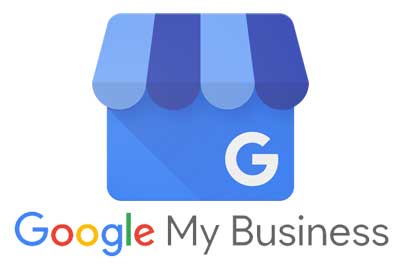Expanding to a New City? 5 Steps to Expanding Your Digital Marketing Strategy
You’ve worked tirelessly to establish your business in one location. All those late nights and early mornings, all that business savvy, luck, and sweat equity earned your business a place in the community around it.
Now you’re looking to expand to a new area, maybe the other side of town or a completely new city.
How do you optimize your digital marketing strategy for your new location? Will you be starting from scratch, or does having a marketing strategy in place for your first location give you a leg up?
Here are 5 steps to follow that can help you to quickly expand your digital marketing to include the new location. Following these guidelines will not only help establish the new business location, but it will also help boost your original location, as well.
Set Up A New Google My Business Page

You probably already have a Google My Business page for your original location. If not, this is what GMB is all about.
Within Google, you can register your business and create a listing for your location. This listing will appear in local searches, especially when someone searches for your business type in Google Maps.
Instead of just showing the name of your business and its location, the GMB page will display other important information potential customers will want to know about, such as opening and closing times, a description of your services or products, pictures of the location, and reviews from other customers.
Having an optimized GMB page can provide a significant boost to your business’s reputation in the area, giving you credibility and social proof. This is why it’s so important to set up a Google My Business page for the new location as soon as it opens.
As the owner of your original GMB page, you’ll be able to copy information over from one to the next, giving you a leg up.
You can also show Google that these two locations, even if they are in different cities.
Unfortunately, there isn’t a way to simply copy the reviews from one location to another, but customers doing their research may notice the reviews of another location.
Update (and Upgrade) Your Website
If your company is a location-based business, then your website was probably optimized for the original location. The site is probably packed full of local images, and headings and written information that mentions the city or neighborhood where the business is located.
Now that you are expanding to a new location you’ll want to update your website to include descriptions and images from both locations.
This may include the following steps:
● Update your business’s description to include two locations.
● Add the second location and contact information to whatever contact/location page you have.
● Add the expansion to any “About Us” or “Our Story” pages.
● Include images of both locations early and throughout the site.
In addition to such simple updates, you’ll want to add some new pages to your website specific to the new location.

For example, you may want to set up a new landing page for the second location. This landing page can be optimized with the new location in mind, perhaps showing more images of the new place, as well as listing any services or products offered, especially if anything is unique about the new location.
Of course, having a new landing page or set of pages is great, but they won’t get you very far without a linking scheme so that potential customers can find these new pages. That means linking to the pages from external sources, such as the Google My Business page we’ve already talked about, and linking to the new pages internally, from other parts of your website.
Depending on your business, you may even want to build a completely separate website for the second location. This isn’t usually recommended, however.
Here are some questions to consider when thinking about such an option:
● Is the new location different in some way?
● Does the new location offer unique services or products?
● Does the new location cater to a different clientele?
● Are the two locations in neighboring cities, or are they across the country from one another?
● Would you need to have different marketing strategies for each location, based on the community around the locations?
As you can see, there is a lot to consider before choosing to go with separate websites for each location. In many cases, simply adding to the website you already have is the best option, especially when it comes to SEO, which we’ll get to in the next section.
Craft New Location-Specific SEO

SEO on its own doesn’t work like it used to, but optimizing your content for Google and the like is still an essential component to any marketing plan.
You probably already worked hard to optimize certain pages of your website for your business type and the area in which it is located.
For example, a jewelry store in Los Angeles would want to rank for Los Angeles Jewelry and similar search terms.
Adding a new location doesn’t mean you’ll have to start over from scratch. You might add new, longer pages to serve as pillar content on your website, pages that feature keyword phrases that include the name of the new city or area you’re expanding your business to. But supporting pages that feature related keywords could be linked in to point to both the old and new pillar content pages.
So, for example, you may have a page that features the keyword phrase Los Angeles Jewelry as pillar content. Then, you may have a supporting page that uses the keyword California Jewelry. Then, with a new pillar content page featuring the keyword phrase San Diego Jewelry could also link to the same supporting page, since San Diego is still in California.
By using the SEO structure you’ve already built for your first location, you can easily create an SEO strategy that boosts both the old location and new location, possibly making both strategies more powerful in the process.
Start Local Advertising

Once your website has been updated to reflect the new location, and your SEO strategy is in place to boost both the old and the new locations, you’ll want to use PPC (pay per click) advertising to further boost your efforts to establish the new store in the new city.
Much like SEO, PPC advertising is not as powerful as it used to be. But it still packs quite a punch when used in concert with the other steps mentioned in this article.
When your ads appear on the websites of other local businesses, for example, you’re guaranteed to start generating local awareness for what your company has to offer.
In certain circumstances, local advertising outside of the Internet can help, as well. Radio spots, billboards, or ads in the local newspaper can build awareness. Such means work better for local business in a smaller town than in large, metropolitan areas.
Fire up a Social Campaign

Perhaps the most powerful tool in a digital marketer’s belt these days, social media offers more options for advertisements and brand building than ever before.
The power of social media ad campaigns is their ability to target very specific groups of people, meaning you can get the most bang for your buck.
You can limit your ad reach to people living within 30 miles of your business location, for example, and further narrow the reach down to the kind of people (male, female, young, old, etc) that are most likely to be interested in what your business has to offer.
If an ad campaign on Facebook or some other social network really goes micro-viral, you can have the boosted effects of the digital version of word of mouth.
All in all, expanding to a new city or area is not the same as starting from scratch. In fact, you can extend the power of your brand to a new location by following just a handful of important steps.
Many of these steps do very little on their own, but when combined together in smart ways, as part of a complete digital marketing strategy, your new business location can quickly find itself in a position to grow your brand to new heights, pulling in new customers, and earning the more positive and long-lasting reputation.



